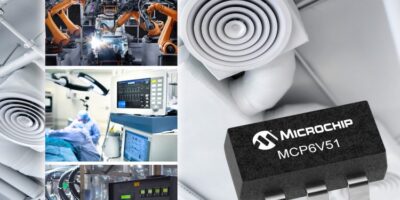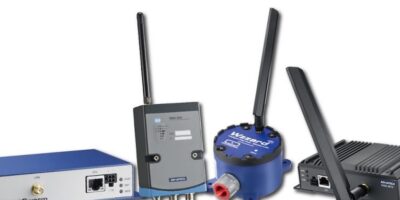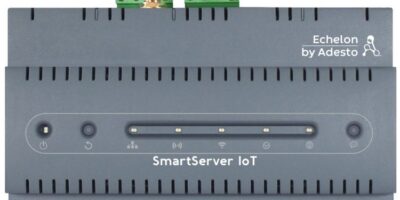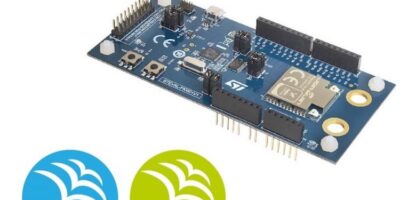Meeting the needs of precision measurement in industrial control and factory automation, the MCP6V51 zero-drift operational amplifier (op amp) provides precision measurement and minimises the influence of high-frequency interference, claims Microchip. The MCP6V51 offers a wide operating range and on-chip EMI filters.
The so-called smart factory has led to an increase in the number of sensors that need to be monitored and the MCP6V51 amplifier is designed to provide accurate, stable data from a variety of sensors. Its self-correcting zero-drift architecture enables high DC precision, claims Microchip, providing a maximum offset of ±15 microV and only ±36 nanoV per degree C of maximum offset drift. The MCP6V51 supports a wide operating voltage range – from 4.5 to 45V, suitable for factory automation, process control and building automation applications.
The increasing numbers of wireless sensors and wireless capabilities raises high frequency interference within sensitive analogue measurement as a critical consideration. The additional on-chip EMI filtering within the MCP6V51 provides protection from these unwanted and unpredictable interference sources. This allows designers to provide improved performance while more easily managing an increasingly difficult environment.
Programmable logic controllers and distributed control systems used within industrial automation run on a variety of voltage rails, such as 12, 24 or 36V. The support for a wide range of supply voltages includes overhead to account for supply transients by supporting an operating range up to 45V.
An evaluation board is also available. The eight-pin SOIC/MSOP/TSSOP/DIP evaluation board (Part # SOIC8EV) is a blank PCB that allows each device pin to be connected to a pull-up resistor, a pull-down resistor, an in-line resistor, and a loading capacitor. The PCB pads allow through-hole or surface-mount connectors to be installed to ease connection to the board. Additional passive component footprints are on the board, to allow simple circuits to be implemented.
The MCP6V51 is available today for sampling and volume production in both eight-lead MSOPs and five-lead SOT-23 packages.







